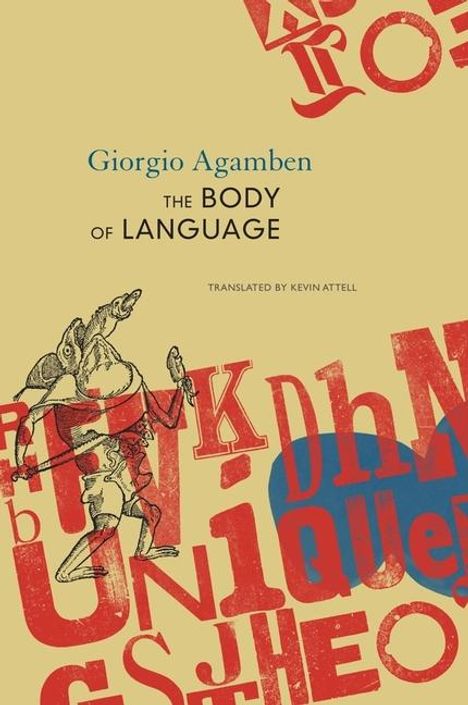Giorgio Agamben: The Body of Language, Gebunden
The Body of Language
- Esperruquancluzelubelouzerirelu
(soweit verfügbar beim Lieferanten)
- Übersetzung:
- Kevin Attell
- Verlag:
- Seagull Books, 11/2025
- Einband:
- Gebunden
- Sprache:
- Englisch
- ISBN-13:
- 9781803094762
- Artikelnummer:
- 11982250
- Umfang:
- 100 Seiten
- Gewicht:
- 454 g
- Maße:
- 229 x 152 mm
- Stärke:
- 18 mm
- Erscheinungstermin:
- 22.11.2025
- Hinweis
-
Achtung: Artikel ist nicht in deutscher Sprache!
Klappentext
An erudite exploration of transgressive language from the Renaissance by one of Europe's greatest living philosophers. This book explores how early modern authors broke linguistic boundaries, creating new words and languages that challenged traditional grammar and lexicon, providing historical insight into today's debates on the politics of language. Through a scholarly analysis by Giorgio Agamben, the text delves into the boundary-shifting language of the Renaissance, exemplified by giants like Pantagruel and Gargantua, whose outsized bodies mirror the vastness of their speech. The macaronic language invented by Teofilo Folengo, blending Latin and vernacular, embodies a linguistic rebellion that transforms language into a tangible, unruly force. Featuring illustrations from the Songes drolatiques de Pantagruel and Folengo's Baldo, this volume offers a vivid portrayal of language as a physical, dynamic entity that defies grammatical norms.
Biografie (Giorgio Agamben)
Giorgio Agamben wurde 1942 in Rom geboren. Er studierte Jura, nebenbei auch Literatur und Philosophie. Der entscheidende Impuls für die Philosophie kam allerdings erst nach Abschluß des Jura-Studiums über zwei Seminare mit Martin Heidegger im Sommer 1966 und 1968. Neben Heidegger waren seitdem Michel Foucault, Hannah Arendt und Walter Benjamin wichtige Bezugspersonen in Agambens Denken. §Als Herausgeber der italienischen Ausgabe der Schriften Walter Benjamins fand Agamben eine Reihe von dessen verloren geglaubten Manuskripten wieder auf. Seit Ende der achtziger Jahre beschäftigt sich Agamben vor allem mit politischer Philosophie. Er lehrt zur Zeit Ästhetik und Philosophie an den Universitäten Venedig und Marcerata und hatte Gastprofessuren u.a. in Paris, Berkeley, Los Angeles, Irvine.§



